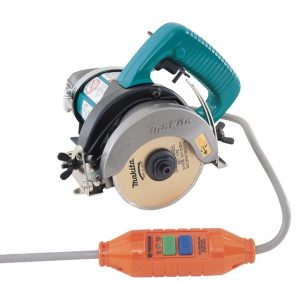Circular saws come in various shapes and sizes, the main difference between them being their abrasive blades. The best abrasive circular saws feature a diamond or cubic-boron nitride-edging, which allows them to slice through materials with a high degree of hardness. However, these saws are expensive and tend to wear out quickly.
Safety precautions
 When using a circular saw, it’s important to take the proper safety precautions to protect your hands and body. This means wearing protective eyewear, a dust mask, and a full-face shield. In addition, wear appropriate clothing, including a safety helmet and ear protection, which is also important. Also, avoid wearing loose clothing and jewellery, which could get caught in the rotating blades.
When using a circular saw, it’s important to take the proper safety precautions to protect your hands and body. This means wearing protective eyewear, a dust mask, and a full-face shield. In addition, wear appropriate clothing, including a safety helmet and ear protection, which is also important. Also, avoid wearing loose clothing and jewellery, which could get caught in the rotating blades.
Before cutting, check the material you’re cutting with the circular saw for any obstructions. For example, you don’t want to cut a nail or a screw accidentally. Otherwise, they can become projectiles and cause damage to your body.
Power
When shopping for a circular saw, you may wonder what the difference is between a corded and cordless saw. The difference in power is the motor’s amperage or the amount of electricity the tool can draw. Most cordless circular saws use lithium-ion batteries, lasting anywhere from five to nine hours.
Circular saws are durable power tools that require proper care. To keep them in good working condition, you can use compressed air or a small brush to clean them. You can also use a household oven cleaner to remove the resin on the blade. The cleaner should be applied for around 20 minutes and then removed with a clean cloth. Once clean, you should apply a thin layer of oil to the blade and store it away.
Weight
Circular saws come in a variety of weights. Compact models can weigh just four pounds, while larger, professional-grade models weigh up to 10 pounds. Weight affects balance and cutting speed. Consider how much weight you’d like to carry around to perform your daily tasks. Different features can add to the weight of your circular saw.
A professional-grade circular saw should be durable and withstand typical job site abuse. One of the best circular saws for durability is the SKILSAW SPT77WML-0. This saw features a 7-1/4-inch cutting blade that can cut wood up to two and a half inches thick without flinching. It can also tilt up to 53 degrees and has a locking system that locks the blade at a 45-degree angle.
Sidewinder
The Sidewinder circular saw is a compact, lightweight one with a powerful 15-amp motor. Its weight is ten pounds, making it suitable for long days of cutting. Its price is also lower than other types. In addition, its magnesium components reduce its weight and extend its life.
Sidewinder models are easy to maneuver, thanks to their weight transfer system and convenient motor placement. This eliminates the need for you to push or hold the saw while cutting. Some models have helical gearing, which can increase the motor’s torque. This affects the blade’s speed.
Hypoid
Compared to conventional worm drive saws, hyped gears’ power and surface contact provide more power and greater surface contact than the standard model. In addition, the powerful 15 A motor provides a smooth cut without jerking or slipping. This makes hypoid circular saws a superior choice for home use.
One of the most important features of a hypoid saw is ergonomics. Before buying one, it’s important to try it out. This will allow you to see if it feels comfortable and stable in your hands. Because hypoid saws tend to vibrate due to their high RPM and torque, hand grips should be cushioned with rubber. You should also avoid hand grips with hard plastic coating.
Inventors
In the early 20th century, an immigrant named Edmond Michel invented the handheld circular saw. Before this tool, sugar farmers had to use machetes to cut through the thick cane stalks. This made it difficult to gather sugar. Michel wanted to solve this problem. By 1885, he had patented a handheld circular saw, which was used by millions of people.
In the U.S., two Frenchmen patented the circular saw. They learned about the device in Shaker newspapers and decided to patent it. However, a Shaker woman named Stephen Miller claims she was not the first person to invent the circular saw. After joining the Shaker sect in 1805, she argued that two other men named Benjamin Bruce and Amos Bishop had already invented it.
Price
The demand for circular saws depends on industrial production, nonresidential construction, and private home improvements. During the global economic crisis, these segments dipped precipitously. However, a recent economic rebound has reversed these trends and fueled demand in downstream markets. These factors, however, have also eroded buyer power. Moreover, the cost of primary inputs, including steel, is expected to decrease in the next three years, which will offset any need to raise prices.
Circular saws are available at various prices, including bare and battery-operated tools. Typically, the price difference is minimal for long-term use, and the battery size should match the desired power output.